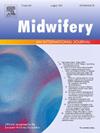实施临床实践指南的产中护理低风险分娩在比利时。
IF 2.5
3区 医学
Q1 NURSING
引用次数: 0
摘要
背景:最新的比利时临床实践指南的产中护理低风险分娩需要支持,以促进其实施,因为仅仅提出的指导方针并不能保证采用的最终用户。目的:系统地识别和优先考虑需要更多实施支持的临床问题,了解实施障碍和促进因素的背景,并为比利时产科服务定义一套医疗保健行为实施活动。方法:采用综合知识翻译方法,结合知识到行动和干预绘图框架。这种方法包括确定需要加强实施支持的临床问题,分析环境中的障碍,并确定变革和绩效目标。比利时多方利益攸关方咨询小组和咨询委员会的反馈意见为这一进程提供了信息。研究结果:两个临床问题需要更多的支持来实施:(1)分娩期间的初步临床调查;(2)低风险分娩期间的持续调查和干预。应用这些建议的障碍包括个人医疗保健专业因素和专业相互作用。实施要求保健专业人员认识到分娩和分娩的生理方面,随时了解最新的证据,接受支持低风险分娩管理的证据,并在征求妇女同意的同时参与共同决策。实现行为改变包括转变态度、意图、知识、社会规范和技能。讨论:已确定的实施建议的障碍强调了人际动态在成功实施指南中的关键作用。因此,政策应解决比利时产妇保健中的结构性挑战。结论:加强产科保健服务,需要跨专业的沟通、协作和相互理解。本文章由计算机程序翻译,如有差异,请以英文原文为准。
Implementation of the clinical practice guideline on intrapartum care for low-risk births in Belgium
Background
The newest Belgian clinical practice guideline on intrapartum care for low-risk births requires support to facilitate its implementation, as merely presenting guidelines does not guarantee adoption by end-users.
Aim
To systematically identify and prioritise clinical questions that need greater implementation support, understand the context of barriers and facilitators to implementation, and define a set of healthcare behavioural implementation activities for Belgian maternity services.
Methods
We employed an integrated knowledge translation approach, combining the Knowledge-To-Action and Intervention Mapping frameworks. This approach involves identifying clinical questions that require enhanced implementation support, analysing barriers within the context, and defining change and performance objectives. Feedback from a Belgian multi-stakeholder consulting group and Advisory Board informed the process.
Findings
Two clinical questions require greater support for implementation: (1) initial clinical investigations during labour and (2) ongoing investigations and interventions during a low-risk birth. Barriers to applying the recommendations include individual healthcare professional factors and professional interactions. Implementation demands healthcare professionals recognise the physiological aspects of labour and birth, stay updated on the evidence, accept the evidence supporting the management of low-risk births, and involve shared decision-making while seeking the woman’s consent. Achieving behavioural change consists of shifting attitudes, intentions, knowledge, social norms, and skills.
Discussion
The identified barriers to implementing recommendations emphasise the crucial role of interpersonal dynamics in successful guideline implementation. Therefore, policies should tackle structural challenges within Belgian maternity care.
Conclusion
To enhance maternity care services, communication, collaboration, and mutual understanding across professional boundaries are needed.
求助全文
通过发布文献求助,成功后即可免费获取论文全文。
去求助
来源期刊

Midwifery
医学-护理
CiteScore
4.50
自引率
7.40%
发文量
221
审稿时长
13.4 weeks
期刊介绍:
Midwifery publishes the latest peer reviewed international research to inform the safety, quality, outcomes and experiences of pregnancy, birth and maternity care for childbearing women, their babies and families. The journal’s publications support midwives and maternity care providers to explore and develop their knowledge, skills and attitudes informed by best available evidence.
Midwifery provides an international, interdisciplinary forum for the publication, dissemination and discussion of advances in evidence, controversies and current research, and promotes continuing education through publication of systematic and other scholarly reviews and updates. Midwifery articles cover the cultural, clinical, psycho-social, sociological, epidemiological, education, managerial, workforce, organizational and technological areas of practice in preconception, maternal and infant care.
The journal welcomes the highest quality scholarly research that employs rigorous methodology. Midwifery is a leading international journal in midwifery and maternal health with a current impact factor of 1.861 (© Thomson Reuters Journal Citation Reports 2016) and employs a double-blind peer review process.
 求助内容:
求助内容: 应助结果提醒方式:
应助结果提醒方式:


